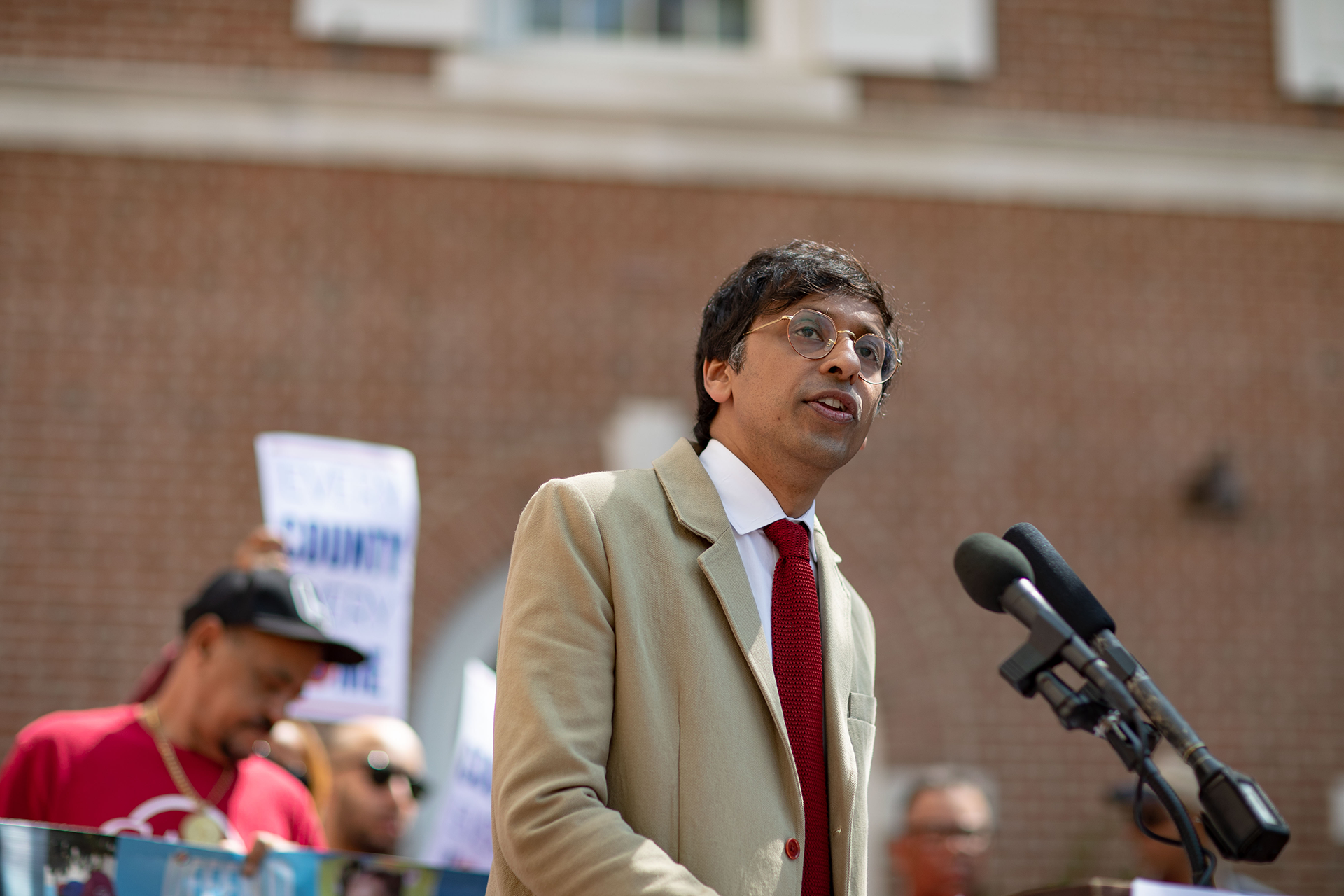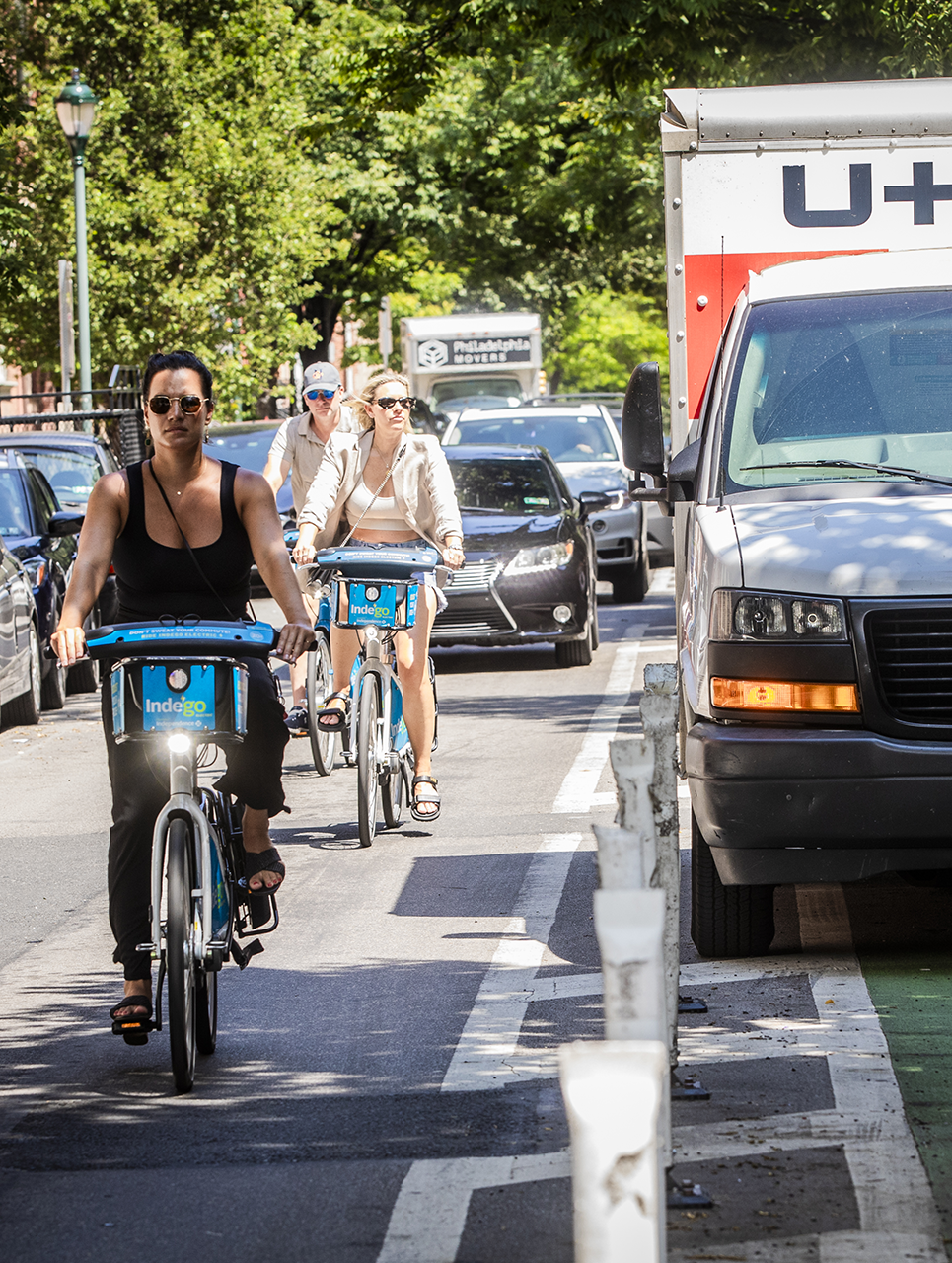Since former Mayor Jim Kenney set a goal three years ago of making Philadelphia carbon neutral by 2050, City government has been busy. It has replaced street lights with efficient LEDs, electrified its vehicle fleet and improved the energy efficiency of City buildings.
All those initiatives can only go so far to help Philadelphia become carbon neutral, however, since they only impact municipally-owned property. Private sector and nonprofit entities control essential infrastructure and buildings that generate most of the city’s carbon emissions, but there are few restrictions on what sort of energy they use and how much carbon they emit.
In the absence of strong government regulation, voluntary pledges are the only indication of how these organizations will tackle the climate crisis. And that has some activists, experts and elected officials worried. “I don’t think pledges are inherently bad. They’re a good thing, but they have their limitations,” says Ted Otte with Project Drawdown, a nonprofit that promotes climate solutions. “The most common challenge we see is that companies are struggling to move from promises and pledges to actual climate and sustainability performance.”
According to Otte, good climate pledges include near-term reduction targets for scope 1, 2 and 3 emissions — that is, emissions from sources directly controlled by the organization (scope 1), emissions that a company causes indirectly via the energy it purchases (scope 2), and indirect emissions in an organization’s value chain (scope 3) — and a clear, transparent strategy for how the organization will achieve them. But today, the pledges of many companies in Philadelphia and the surrounding region come up short. Comcast’s pledge to achieve carbon neutrality by 2035 doesn’t include its scope 3 emissions. Vanguard’s pledge to reduce emissions in its operations doesn’t cover the billions it has invested in fossil fuel.
Corporations are just accountable to themselves, and nonprofit entities are just accountable to themselves and their trustees. If they don’t meet their goals, they might be embarrassed for themselves, potentially. But the effects for the rest of us are profound.”
— Nikil Saval, Pennsylvania State Senator
Even the best pledge can come up short in the end. Because they’re voluntary, organizations can shift or scrap their goals without consequence. According to the Financial Times, several big corporations including Unilever, Shell and Bank of America have missed goals to cut emissions or dropped their goals altogether in the past year. A study by NewClimate Institute and Carbon Market Watch of 51 corporate climate pledges found that they were, on average, insufficient to limit global heating to the 1.5 degrees Celsius limit set by the Paris Agreement.
“Corporations are just accountable to themselves, and nonprofit entities are just accountable to themselves and their trustees. If they don’t meet their goals, they might be embarrassed for themselves, potentially. But the effects for the rest of us are profound,” says State Senator Nikil Saval. “It’s not something that we should feel like we can depend on.”

In Philadelphia, buildings make up 69% of greenhouse gas emissions. Out of hundreds of thousands of buildings in Philadelphia, only around 600 are owned and operated by the City — the rest are privately-owned. Commercial buildings alone account for more than 15% of greenhouse gas emissions in the city.
Currently, the City has few tools at its disposal to require those buildings to reduce their emissions. In 2019, the City launched its Building Energy Performance Program, which mandates that large, non-residential buildings conduct building tune-ups aimed at increasing energy efficiency. According to the City, the program has a compliance rate of just 38%, and even full compliance would cut carbon pollution in Philadelphia by just 200,000 metric tons, a small fraction of the 20.5 million metric tons emitted in the city in 2019. Moreover, the program can’t require buildings to achieve net-zero emissions through, for instance, power purchase agreements of renewable energy.
Some of the city’s largest building owners, meanwhile, have taken up a voluntary pledge to reduce their energy use and, by extension, their carbon emissions. In 2018, the nonprofit Green Building United launched the Philadelphia 2030 District, one of 23 similar initiatives across the U.S. and Canada. Building owners that sign onto the 2030 District pledge signal their intent to reduce transportation emissions, energy and water consumption by 50% by 2030.
Today, 411 buildings, representing more than 58 million square feet of building space — including more than 31 million square feet of School District of Philadelphia buildings — are committed to the pledge. “We know that there is a desire among some actors in the city to do more, to demonstrate leadership,” says Richard Freeh, executive director of Green Building United.
The most common challenge we see is that companies are struggling to move from promises and pledges to actual climate and sustainability performance.”
— Ted Otte, Project Drawdown
Figuring out how any individual actor is performing against its 2030 District goals, however, is difficult. Green Building United publishes the aggregate annual carbon emissions of the buildings under its pledge, but it doesn’t share an individual building’s data “without explicit permission” in order to “protect the confidentiality of each individual building.” According to Freeh, “just about all” of the properties participating in the 2030 District are required to report under the City’s Building Energy Benchmarking Program, so theoretically one could “crunch the numbers” to determine a building owner’s change in energy use over time.
The benchmarking program, however, currently has a compliance rate of just 68.8%, and the number of successfully reported buildings has been decreasing. In 2022, the most recent year for which data is available, 705 buildings had “questionable or missing data,” a 44% jump since 2019.
Reaching out to 2030 District pledge signatories directly doesn’t necessarily yield better information. Take Brandywine Realty Trust, a national, commercial real estate giant behind the Cira Centre and the forthcoming $3.5 billion Schuylkill Yards, among many other buildings in Philly. The company was the first to sign on its entire portfolio in support of the Philadelphia 2030 District.
Brandywine publishes its company-wide emissions data in an annual “Corporate Social Responsibility Report,” which shows reductions in its scope 1 and 2 greenhouse gas emissions since 2018. But the company’s 2023 report does not disclose scope 3 data, and it does not break down greenhouse gas emissions by city. Brandywine declined to comment for this story.
The 2030 District pledge is not the only climate pledge that doesn’t require signatories to publicly disclose emissions data. In April, Jefferson Health made headlines when it announced it had received voluntary Sustainable Healthcare Certification from The Joint Commission, an organization that accredits healthcare organizations and programs. To receive the certification, organizations need to report baseline emissions data for three greenhouse gas emission sources to the commision and an action plan to reduce them. But that plan doesn’t need to achieve any specific level of emissions reductions in any particular time frame, and it doesn’t need to be reported to the public.
When Grid asked for emissions data and details of its plan to reduce emissions, Jefferson Health declined. “We are not able to publicly share data at this time as there are multiple factors that impact our baseline data, including recent expansion (the addition of new buildings), and various energy sources (a blend of traditional and green energy),” says Craig J. Sieving, Jefferson Health’s vice president of facilities. “As it relates to our action plan, Jefferson is achieving its climate goals through a multitude of programs to reduce our greenhouse gas emissions.”
According to the City, most of the energy used by buildings comes in the form of electricity, which accounted for 53% of building energy use in 2022. Reducing the carbon footprint of Philadelphia’s buildings, therefore, comes down in large part to PECO.
In August 2021, Exelon Corporation, which comprises six utilities including PECO, announced that it would reduce its operational emissions 50% (compared to a 2015 baseline) by 2030 and to net-zero by 2050. Now, six years ahead of schedule, PECO spokesperson Brian Ahrens tells Grid that the utility has already reached the first of those goals by electrifying its vehicle fleet, making its buildings more energy-efficient and reducing leaks in its gas system.
Nancy Wygant, an activist with POWER Interfaith, says it’s good that PECO is making its operations more sustainable. But the utility’s climate goal, she says, misses a massive, important aspect of PECO’s carbon footprint — namely, the emissions of the fossil fuels it sells to its approximately 1.7 million customers in the Philadelphia region.
“I would be surprised if a restaurant said, ‘We decided that the food that we feed our employees on their breaks is going to be really nutritious,’ but said nothing about what’s on their menu for their customers,” she says.
PECO is the only distributor of electricity in Philadelphia, which means that the decisions it makes about what kind of energy it chooses to purchase have a huge impact on the ability of the city as a whole to transition away from fossil fuels. It’s why POWER Interfaith and environmental organizations have recently been pushing PECO to increase the percentage of renewable energy in its default service program, which must be approved by the Pennsylvania Public Utility Commission every four years.
Ahrens tells Grid that the utility has “an obligation to ensure that we’re purchasing power at the least cost over time,” and that it is currently doing so while “meeting the alternative energy portfolio standards.” He adds that, “With regards to gas, we believe it’s the key to reliability, resiliency, affordability and equity and that it offers better solutions than things like propane or home heating oil.”
Sen. Saval says the Pennsylvania’s Alternative Energy Portfolio Standards Act, to which Ahrens refers — which requires suppliers like PECO to purchase just 8% of its power from renewable sources — is “vastly inadequate” and should be updated. In the meantime, he says, PECO could exceed the low bar set by state standards by entering into long-term contracts with renewable energy generators, which would ensure lower prices for consumers. But the utility is unlikely to do so voluntarily, which is why PECO should not be left to set its own climate goals, Saval says. “If a utility has a quasi-monopoly, I think it’s on the government to require more from them.”

Some Philadelphia organizations are seemingly on their way to achieving vast emissions reductions voluntarily. In 2020, for instance, the University of Pennsylvania signed a power purchase agreement with Community Energy to buy all the electricity generated from two solar energy facilities in central Pennsylvania, which will provide about 75% of the energy used by Penn’s campus and Penn Medicine. The deal, the university says, will help it meet its commitment of an entirely carbon neutral campus by 2042.
More private institutions in Philadelphia may very well decide to proactively purchase renewable energy to meet their climate goals, says Saval. But many can’t, or won’t, without major government investment. “There has been an assumption that the profit system would ultimately work out in renewables’ favor,” he says. “Obviously, the Inflation Reduction Act has de-risked some of these renewable energy investments. But we’re not building enough.”
According to Saval, we need not wait for private actors to come around to renewables in order to meet our climate goals. He points to New York State’s Build Public Renewables Act, a 2023 law that authorizes the New York Power Authority to build and operate renewable energy projects. “We need hard targets, and ways to meet them through public authorities. The benefits of that would be enormous,” he says.
In addition to government-led investments in renewable energy, City Councilmember At-Large Nicolas O’Rourke says the city government needs to hold companies legally responsible for cutting emissions. As an example, he suggests BERDO 2.0, a 2021 ordinance that requires large buildings in Boston to achieve net-zero emissions by 2050. “That kind of direct, intentional, clear regulation actually helps,” O’Rourke says. “I think it’s something that we in Philly can learn from.”
Isabelle Coupet, a program manager with Green Building United, agrees that government intervention is ultimately needed to achieve Philadelphia’s climate goals. But voluntary pledges can help, she says, if they demonstrate to legislators that there is an interest by private actors to exceed existing regulation. “These people have committed dollars and effort showing they are interested in doing this,” she says. “So you can’t say, ‘We can’t do this policy because big businesses don’t want to do it.’”
 This content is a part of Every Voice, Every Vote, a collaborative project managed by The Lenfest Institute for Journalism. Lead support for Every Voice, Every Vote in 2024 and 2025 is provided by the William Penn Foundation with additional funding from The Lenfest Institute for Journalism, Comcast NBC Universal, The John S. and James L. Knight Foundation, Henry L. Kimelman Family Foundation, Judy and Peter Leone, Arctos Foundation, Wyncote Foundation, 25th Century Foundation, and Dolfinger-McMahon Foundation. To learn more about the project and view a full list of supporters, visit www.everyvoice-everyvote.org. Editorial content is created independently of the project’s donors.
This content is a part of Every Voice, Every Vote, a collaborative project managed by The Lenfest Institute for Journalism. Lead support for Every Voice, Every Vote in 2024 and 2025 is provided by the William Penn Foundation with additional funding from The Lenfest Institute for Journalism, Comcast NBC Universal, The John S. and James L. Knight Foundation, Henry L. Kimelman Family Foundation, Judy and Peter Leone, Arctos Foundation, Wyncote Foundation, 25th Century Foundation, and Dolfinger-McMahon Foundation. To learn more about the project and view a full list of supporters, visit www.everyvoice-everyvote.org. Editorial content is created independently of the project’s donors.








